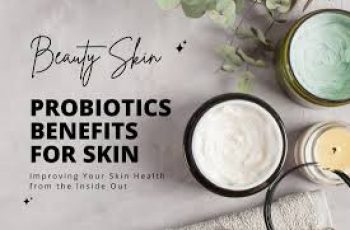
A Dermatologist’s Skincare Resolutions for 2024
2024 is my year for radiant skin. I can feel it already—this is the year I finally put myself back on the skincare priority list. As a dermatologist and a mum, that’s not always easy.
My days are full—consultations, running a busy clinic, raising my family, and staying on top of the latest in skin science. But like many of my patients, I often put my own skincare second.
So this year, I’m making small but meaningful changes. My goal? To treat my skin with the same level of commitment and care I give my clients.
Here are my skincare resolutions for 2024. I hope they inspire you to reflect on your own skin journey too.
1. Retinol Cycling with Intention
Retinol has long held its place as a skincare essential—and with good reason. It’s one of the few ingredients with real scientific backing for its anti-aging benefits.
Now in my 40s, I’ve seen firsthand how retinol helps reduce the appearance of fine lines, improve skin texture, and support long-term skin health.
But even as a dermatologist, I haven’t always used retinol as consistently as I recommend to others. That changes this year.
In 2024, I’m committing to retinol cycling—a smart, skin-friendly way to build retinol into my routine without overwhelming my barrier.
What is Retinol Cycling?
Retinol cycling means alternating between different strengths and formulas of retinol throughout the week or month. It gives the skin time to adjust and recover.
I’ll be starting with a 1% formulation, used sparingly at first, and increasing the frequency slowly. I’ll also rotate between brands to assess how different formulations interact with my skin.
My evening routine will be built around retinol nights, barrier support nights, and recovery nights. This balance helps boost results while avoiding dryness or irritation.
Why this approach? Because it’s not just about applying a strong active—it’s about smart use over time. It’s about sustainability, not intensity.
2. Staying Committed to a Laser Protocol
At my clinic, ODE Dermatology in Melbourne, I regularly recommend personalised laser treatments to my clients. Lasers can transform skin—whether the concern is texture, tone, pigmentation, or collagen loss.
But here’s my confession: I haven’t been following my own advice.
I have access to world-class laser technology, but I’ve struggled to carve out time for consistent care. That changes now.
In 2024, I’m designing and committing to my own 12-month laser treatment plan.
This year, I’ll be targeting:
Collagen loss
Melasma on my cheeks
General skin dullness and textural changes
My Go-To Laser Devices
I’ll be incorporating:
Moxi 1927: A gentle, non-ablative laser that helps brighten skin and improve pigment
Ultraformer: Focused ultrasound that boosts collagen and tightens skin
Exion: A new protocol that helps stimulate hyaluronic acid and improve hydration
These treatments support my skin from within—helping to regenerate, rebuild, and protect.
Why Consistency Matters
The real secret to laser success isn’t one session. It’s having a strategic, consistent protocol supported by tailored skincare at home.
Laser works best when paired with active homecare that hydrates, repairs, and protects the barrier. This dual approach—clinic + home—is the future of skincare.
3. Giving My Scalp the Skincare It Deserves
We often separate hair care from skincare. But the truth is, your scalp is skin—and it deserves the same attention and nourishment.
In 2024, I’m focusing on scalp health as a foundation for hair vitality. My goal? To optimise the scalp microbiome and support long-term hair growth and resilience.
Why Scalp Health Matters
Think of your scalp like soil. If the soil is poor, the plant can’t thrive. Similarly, if the skin around your hair follicles is inflamed, dry, or unbalanced, your hair can’t grow at its best.
Many people overlook the link between skin and hair health. But inflammation, buildup, and microbiome imbalances can all contribute to thinning or dull hair.
This year, I’m prioritising a holistic scalp routine—one that supports both skin and follicle health.
My 2024 Scalp Routine
Here’s what I’ll be using and recommending:
Calendula: Known for its soothing and anti-inflammatory properties
Rosemary extract: A traditional remedy to stimulate hair growth
Burdock root: Helps cleanse and calm the scalp
Essential fatty acids: To support the scalp barrier
Phytosterols: Plant-based compounds that nourish the skin and regulate oil
Together, these ingredients create a balanced environment that encourages healthy growth.
I’ll also be careful about what I don’t use—avoiding ingredients that strip the scalp, clog follicles, or trigger irritation.
4. Prioritising At-Home Support Between Treatments
As much as I love advanced in-clinic treatments, they’re only half the story. What you do at home truly determines your long-term skin health.
This year, I’m doubling down on:
Cleansing gently and thoroughly
Maintaining hydration through barrier-supportive moisturisers
Using antioxidants in the morning to defend against free radicals
Repairing and replenishing at night
Especially after laser, the skin is in a state of healing and renewal. That’s when targeted skincare can make or break your results.
I’ll be treating my at-home routine with the same importance as my in-clinic work. And I recommend my clients do the same.
The Real Secret: Progress Over Perfection
One of my biggest takeaways—both as a dermatologist and a woman—is that consistency beats intensity every time.
You don’t need a 12-step routine. You don’t need to try every new product or trend. What you need is a routine that works for you—one you can stick with, day after day.
That might mean:
Using retinol only twice a week to start
Booking laser treatments quarterly, not monthly
Swapping hair masks for a weekly scalp serum
Adding antioxidants to your morning routine
The point isn’t to be perfect—it’s to be present. To check in with your skin. To adjust and evolve.
Final Thoughts: What I Hope You’ll Take From This
I’m excited for the year ahead, not because I expect flawless skin, but because I know I’m putting energy into myself again.
Skincare is self-care. It’s science, yes—but it’s also soul. It’s how we support the body we live in. It’s how we show up with confidence, grace, and strength.
Whether you’re a skincare beginner or a beauty enthusiast, I hope you’ll join me in making 2024 your most radiant year yet.
Let this be the year you take care of your skin not out of insecurity, but out of respect for yourself.
Here’s to routines that serve you. Skin that reflects your health. And confidence that radiates from within.
About the Author
Dr. Shammi Theesan is a respected dermatologist based in Fitzroy, Melbourne, and the founder of ODE Dermatology.
With a unique blend of cutting-edge clinical expertise and a holistic wellness philosophy, Dr. Theesan helps clients discover truly radiant skin.


